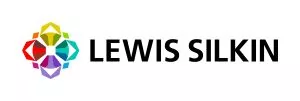- within Intellectual Property topic(s)
- in United Kingdom
- with readers working within the Law Firm industries
- within Intellectual Property, Cannabis & Hemp and Tax topic(s)
The approach to patenting software in Europe often feels relatively settled in terms of its focus on assessing technical effect. In recent years, there has also been some convergence in approach with other major patenting territories. For instance, US practice looks at 'something more than a well-understood, routine, or conventional concept or abstract idea', and often this analysis will end up with a similar result. However, when thinking about patentability, it's important to bear in mind that different territories, and indeed different patent examiners, will always view things differently, which creates opportunities for protecting important features of products which you perhaps wouldn't immediately think of as being protectable by patents.
The recent grant of U.S. Patent Nos. 12,409,387 (covering the "smooth switching of riding objects" in a virtual environment) and 12,403,397 (covering the core mechanic of summoning a character and letting it fight another) to Nintendo and The Pokémon Company are interesting examples of what can (sometimes) be protected. These patents, which have emerged in the context of the ongoing dispute with Pocketpair (developer of Palworld), cover in game mechanics which purportedly enhance player engagement by providing more variety and improving operability. It will be interesting to see whether these patents are challenged on eligibility as part of the dispute and how the 'something more' framework might be applied. It is also interesting to think about how prior art related to interactive mechanics might be dealt with; written gameplay guides are increasingly less common and so a patent examiner or the courts may find it more difficult to have an accurate picture of the state of the art when assessing novelty and obviousness.
Ultimately, cases like the above underscore the importance for software developers to carefully consider their own IP strategy, including their stance on patenting their own innovations, their freedom to operate, and also potentially their approach to deliberately disclosing development features to mitigate third-party patenting risks in areas they wish to operate.

The content of this article is intended to provide a general guide to the subject matter. Specialist advice should be sought about your specific circumstances.


